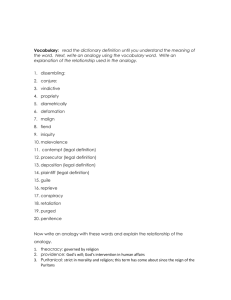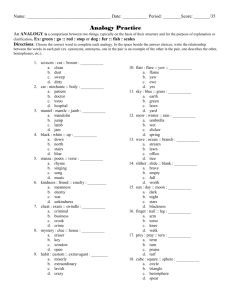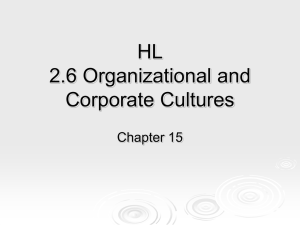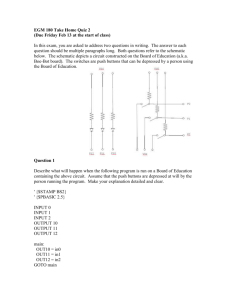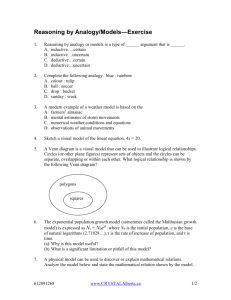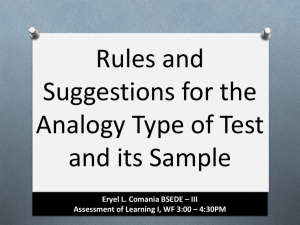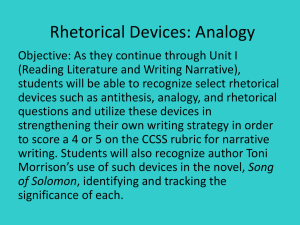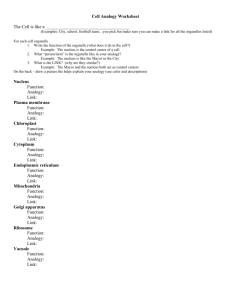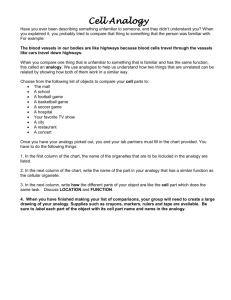MS Word - paesta
advertisement
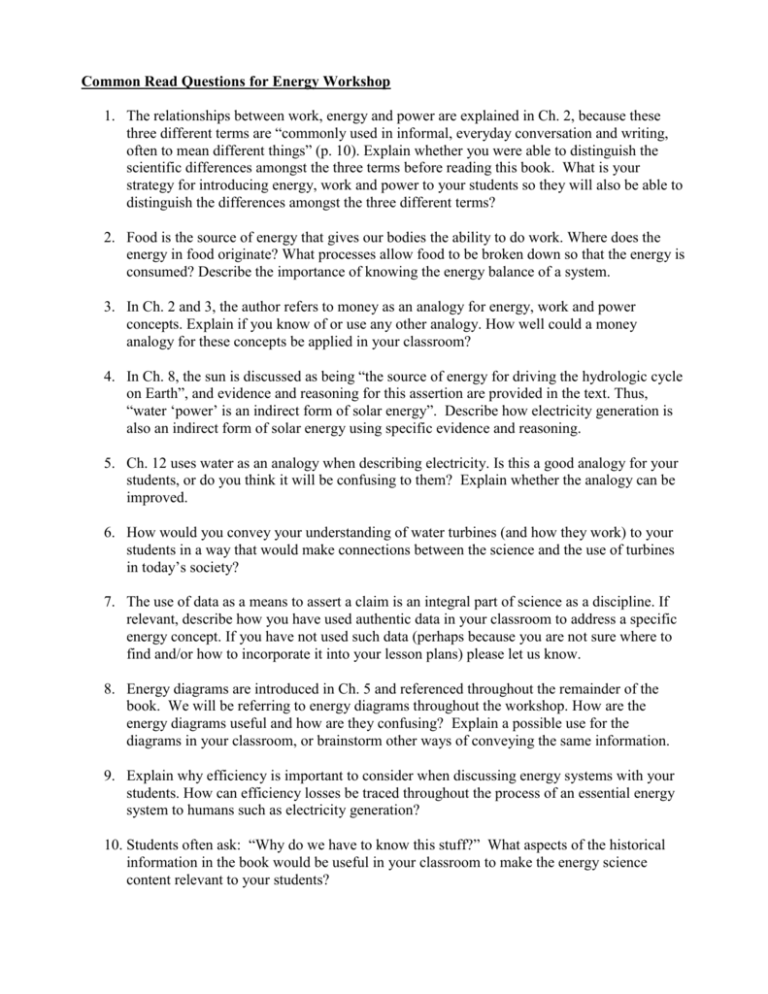
Common Read Questions for Energy Workshop 1. The relationships between work, energy and power are explained in Ch. 2, because these three different terms are “commonly used in informal, everyday conversation and writing, often to mean different things” (p. 10). Explain whether you were able to distinguish the scientific differences amongst the three terms before reading this book. What is your strategy for introducing energy, work and power to your students so they will also be able to distinguish the differences amongst the three different terms? 2. Food is the source of energy that gives our bodies the ability to do work. Where does the energy in food originate? What processes allow food to be broken down so that the energy is consumed? Describe the importance of knowing the energy balance of a system. 3. In Ch. 2 and 3, the author refers to money as an analogy for energy, work and power concepts. Explain if you know of or use any other analogy. How well could a money analogy for these concepts be applied in your classroom? 4. In Ch. 8, the sun is discussed as being “the source of energy for driving the hydrologic cycle on Earth”, and evidence and reasoning for this assertion are provided in the text. Thus, “water ‘power’ is an indirect form of solar energy”. Describe how electricity generation is also an indirect form of solar energy using specific evidence and reasoning. 5. Ch. 12 uses water as an analogy when describing electricity. Is this a good analogy for your students, or do you think it will be confusing to them? Explain whether the analogy can be improved. 6. How would you convey your understanding of water turbines (and how they work) to your students in a way that would make connections between the science and the use of turbines in today’s society? 7. The use of data as a means to assert a claim is an integral part of science as a discipline. If relevant, describe how you have used authentic data in your classroom to address a specific energy concept. If you have not used such data (perhaps because you are not sure where to find and/or how to incorporate it into your lesson plans) please let us know. 8. Energy diagrams are introduced in Ch. 5 and referenced throughout the remainder of the book. We will be referring to energy diagrams throughout the workshop. How are the energy diagrams useful and how are they confusing? Explain a possible use for the diagrams in your classroom, or brainstorm other ways of conveying the same information. 9. Explain why efficiency is important to consider when discussing energy systems with your students. How can efficiency losses be traced throughout the process of an essential energy system to humans such as electricity generation? 10. Students often ask: “Why do we have to know this stuff?” What aspects of the historical information in the book would be useful in your classroom to make the energy science content relevant to your students?
